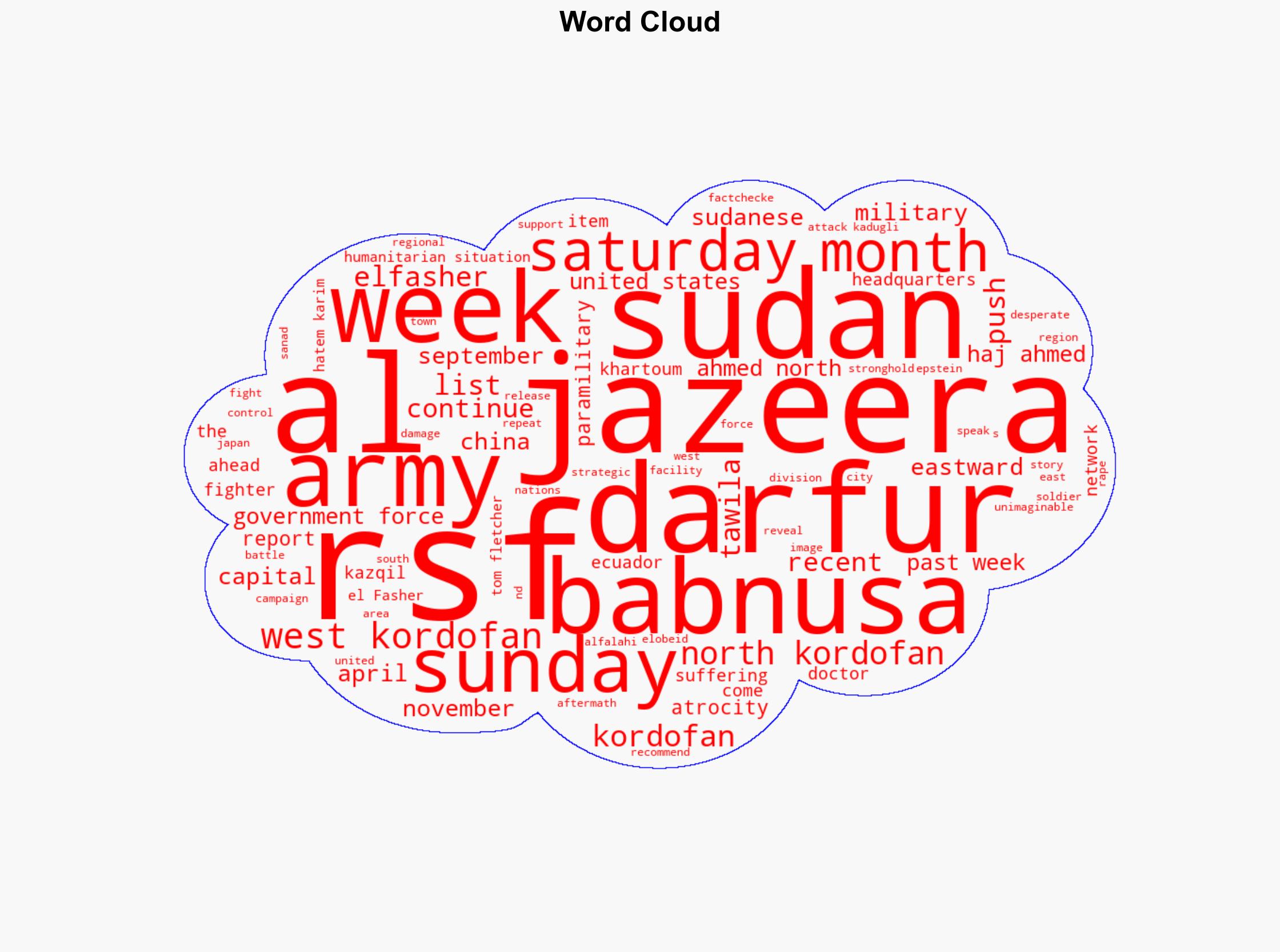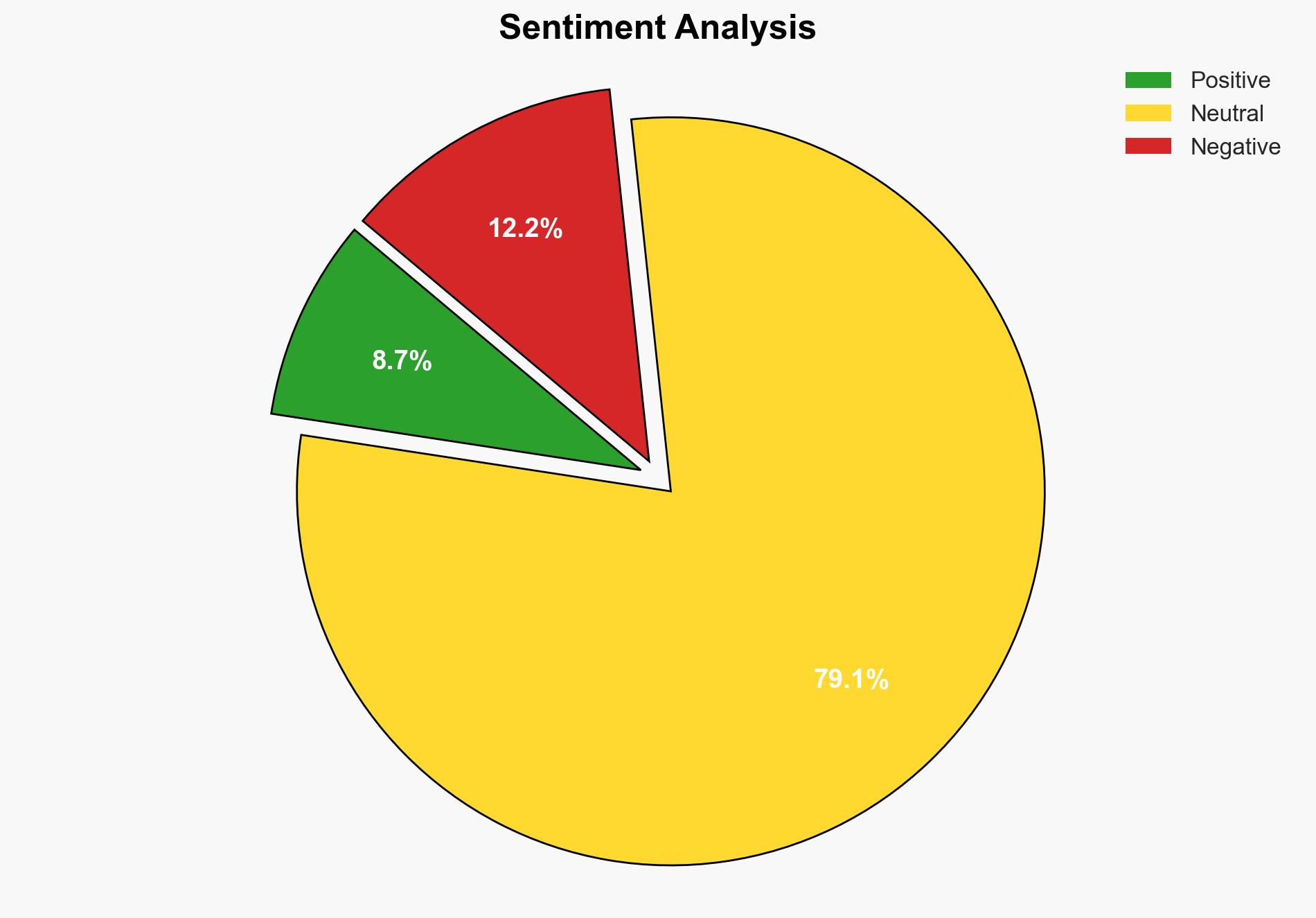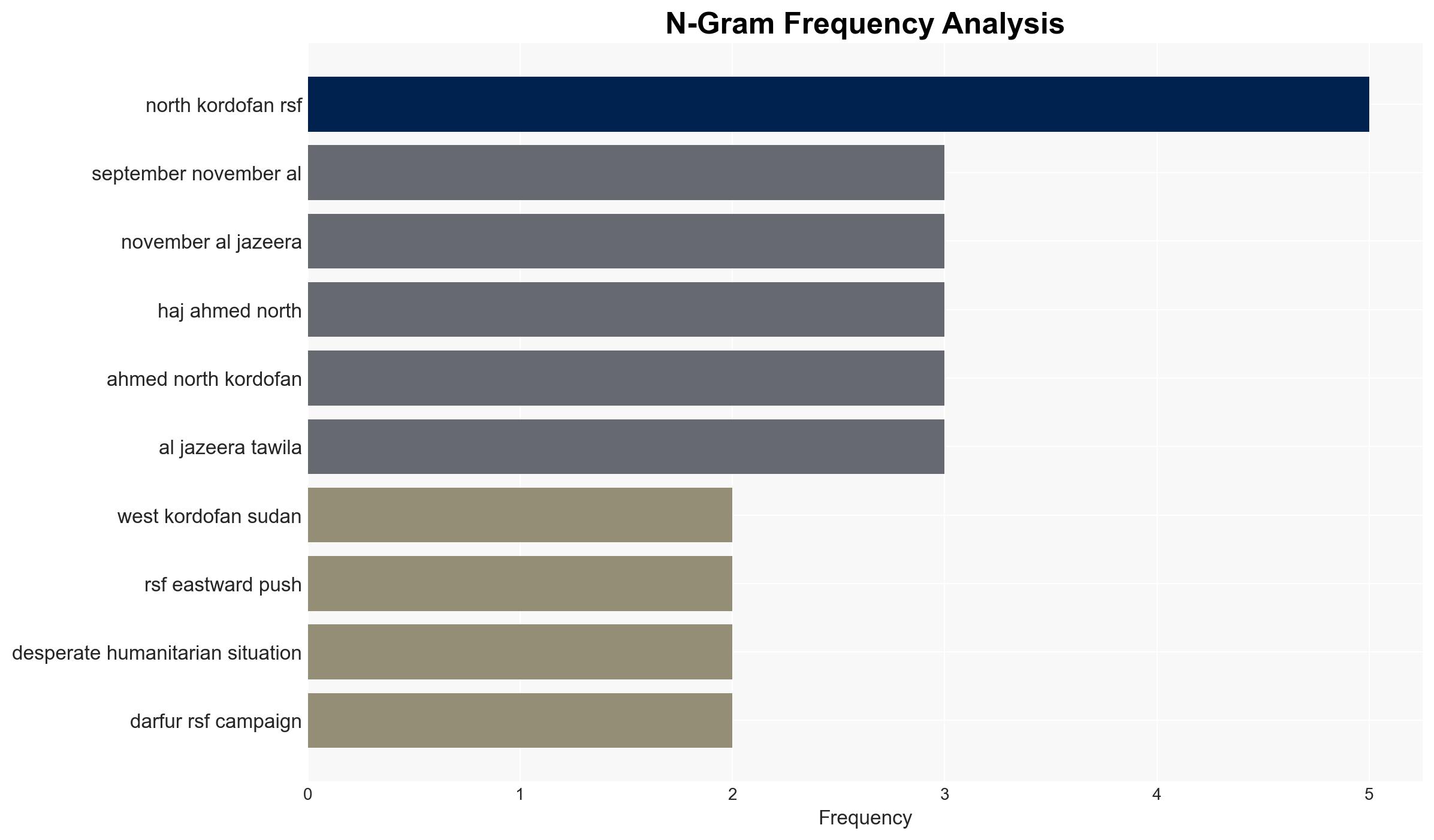Battles in West Kordofan as Sudan army resists RSFs eastward push – Al Jazeera English
Published on: 2025-11-17
AI-powered OSINT brief from verified open sources. Automated NLP signal extraction with human verification. See our Methodology and Why WorldWideWatchers.
Intelligence Report:
1. BLUF (Bottom Line Up Front)
The ongoing conflict in West Kordofan between the Sudanese army and the Rapid Support Forces (RSF) is likely to intensify, with significant humanitarian implications. The most supported hypothesis is that the RSF aims to consolidate control over strategic locations, potentially altering the regional power balance. Confidence Level: Moderate. Recommended action includes increased international diplomatic engagement to mediate a ceasefire and humanitarian intervention to address urgent needs.
2. Competing Hypotheses
Hypothesis 1: The RSF’s eastward push is primarily aimed at securing strategic military and logistical positions to strengthen their negotiating power in potential peace talks.
Hypothesis 2: The RSF’s actions are driven by a broader strategy to destabilize the Sudanese government and establish control over key regions, potentially leading to a de facto partition of Sudan.
Hypothesis 1 is more likely given the RSF’s focus on strategic locations such as Babnusa and their attempts to control infrastructure, which suggests a tactical rather than purely destabilizing intent.
3. Key Assumptions and Red Flags
Assumptions: The RSF has sufficient resources and local support to sustain its offensive. The Sudanese army can maintain its defensive positions without significant external assistance.
Red Flags: Reports of atrocities and humanitarian crises could be used as propaganda by either side to garner international support. The lack of verified information from conflict zones increases the risk of misinformation.
4. Implications and Strategic Risks
The conflict’s continuation could lead to further regional instability, potentially drawing in neighboring countries or non-state actors. The humanitarian crisis may exacerbate, leading to increased displacement and refugee flows, straining international aid resources. Economically, prolonged conflict could disrupt regional trade routes and deter foreign investment.
5. Recommendations and Outlook
- Recommendations: Engage with regional stakeholders and international bodies to facilitate dialogue between the conflicting parties. Increase humanitarian aid and logistical support to affected areas.
- Best Scenario: Successful mediation leads to a ceasefire and initiation of peace talks.
- Worst Scenario: Escalation into a full-scale civil war, with regional spillover effects.
- Most-likely Scenario: Continued skirmishes with intermittent ceasefire attempts, leading to a protracted conflict.
6. Key Individuals and Entities
Colonel Hatem Karim Alfalahi (Military Expert), Tom Fletcher (UN Undersecretary-General for Humanitarian Affairs).
7. Thematic Tags
National Security Threats, Humanitarian Crisis, Regional Stability, Armed Conflict
Structured Analytic Techniques Applied
- Cognitive Bias Stress Test: Expose and correct potential biases in assessments through red-teaming and structured challenge.
- Bayesian Scenario Modeling: Use probabilistic forecasting for conflict trajectories or escalation likelihood.
- Network Influence Mapping: Map influence relationships to assess actor impact.
Explore more:
National Security Threats Briefs ·
Daily Summary ·
Support us
·





